Psych 101 Exam 1 Chapters 1-3
1/193
There's no tags or description
Looks like no tags are added yet.
Name | Mastery | Learn | Test | Matching | Spaced |
|---|
No study sessions yet.
194 Terms
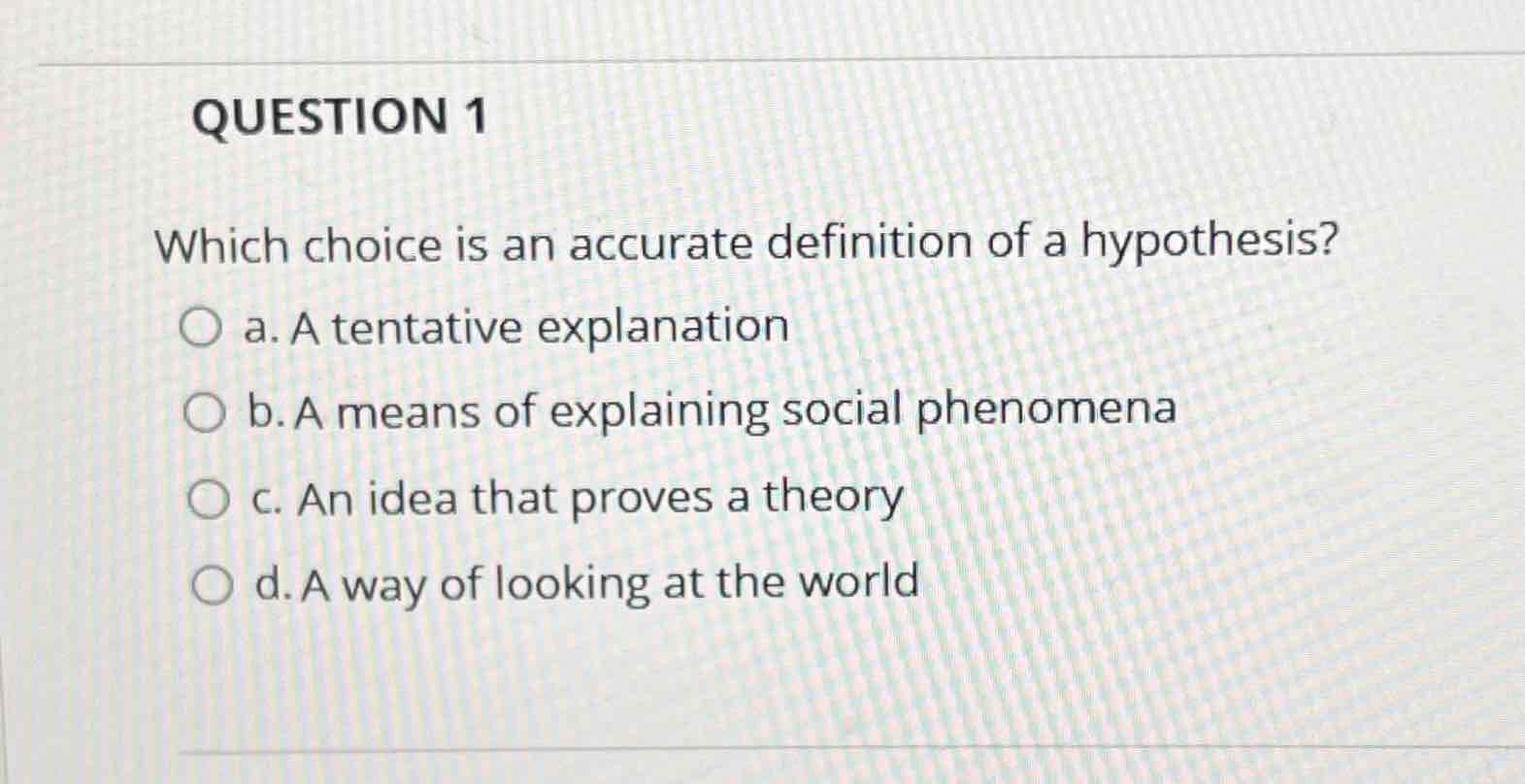
Look at image
A tentative explanation
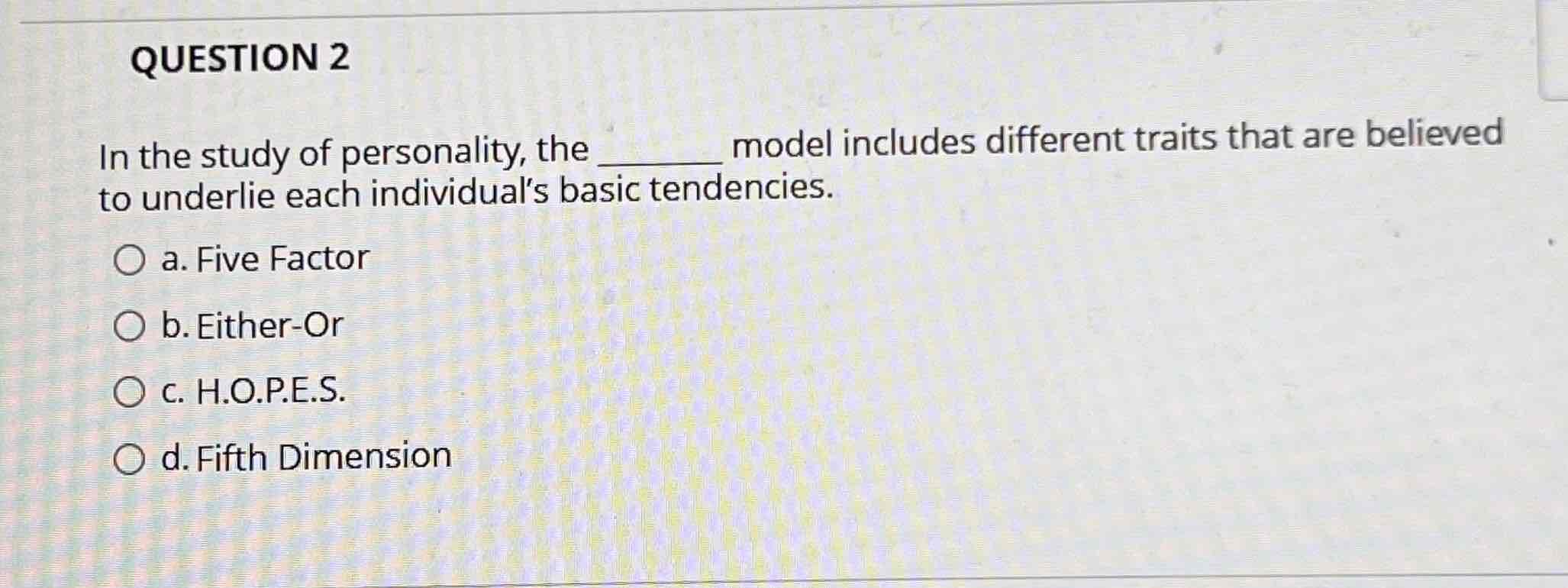
Look at image
Five Factor
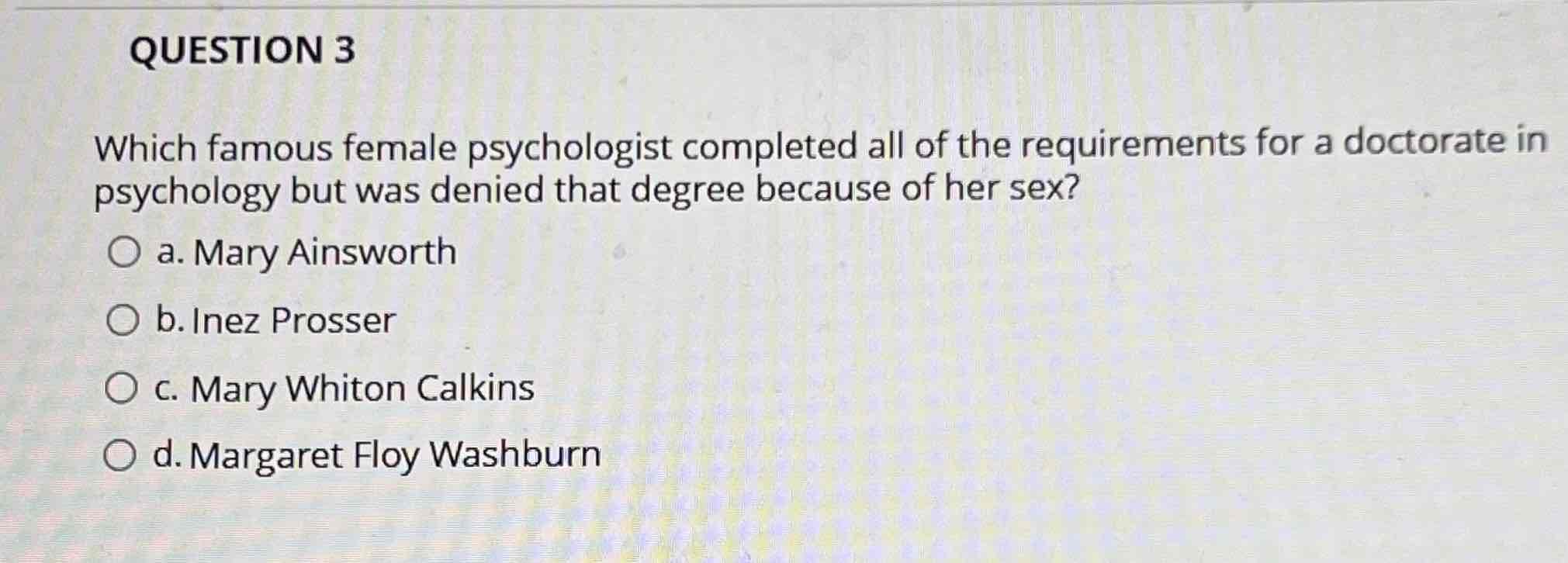
Look at image
Mary Whiton Calkins

Look at image
favoring women over men
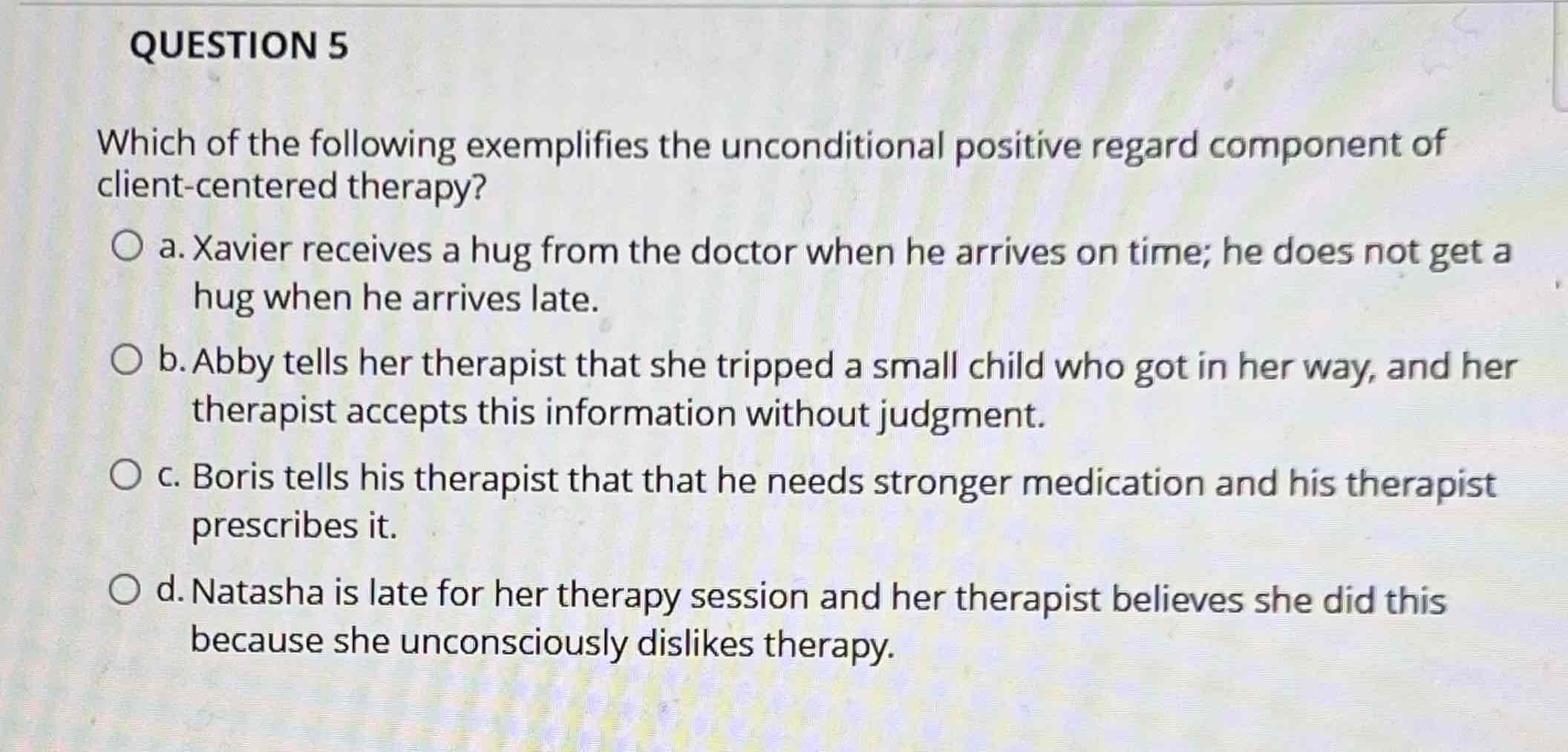
Look at image
Abby tells her therapist that she tripped a small child who got in her way, and her therapist accepts this information without judgment.
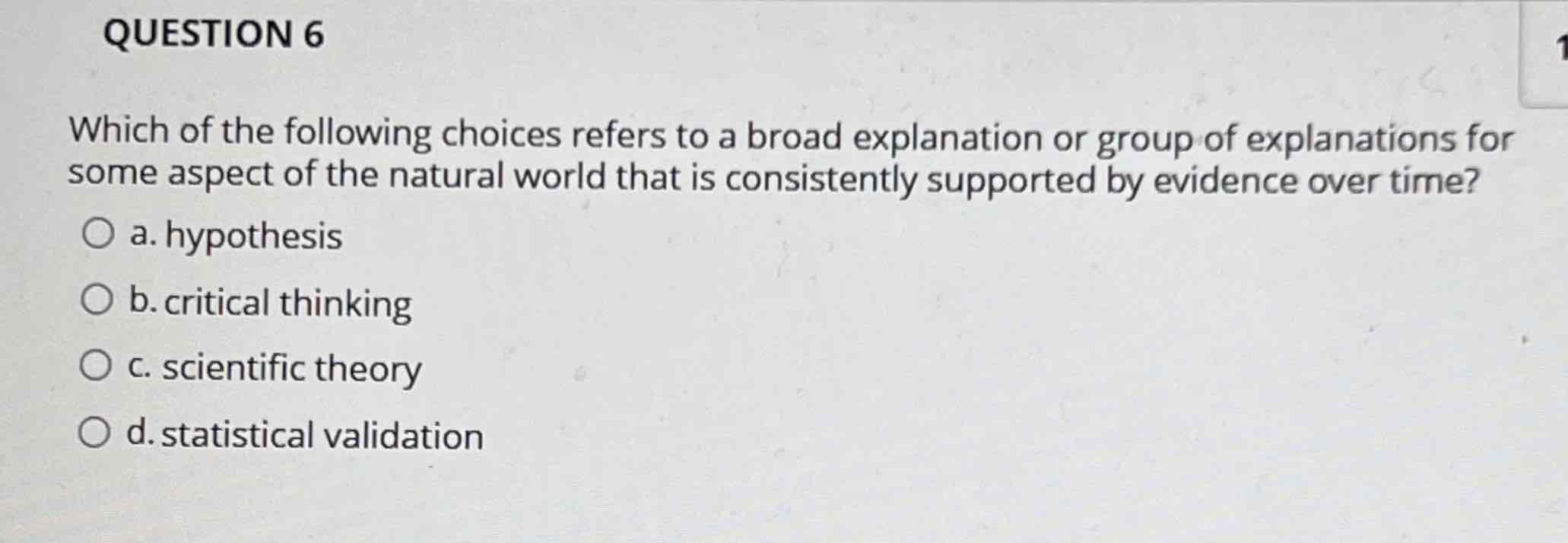
Look at image
scientific theory
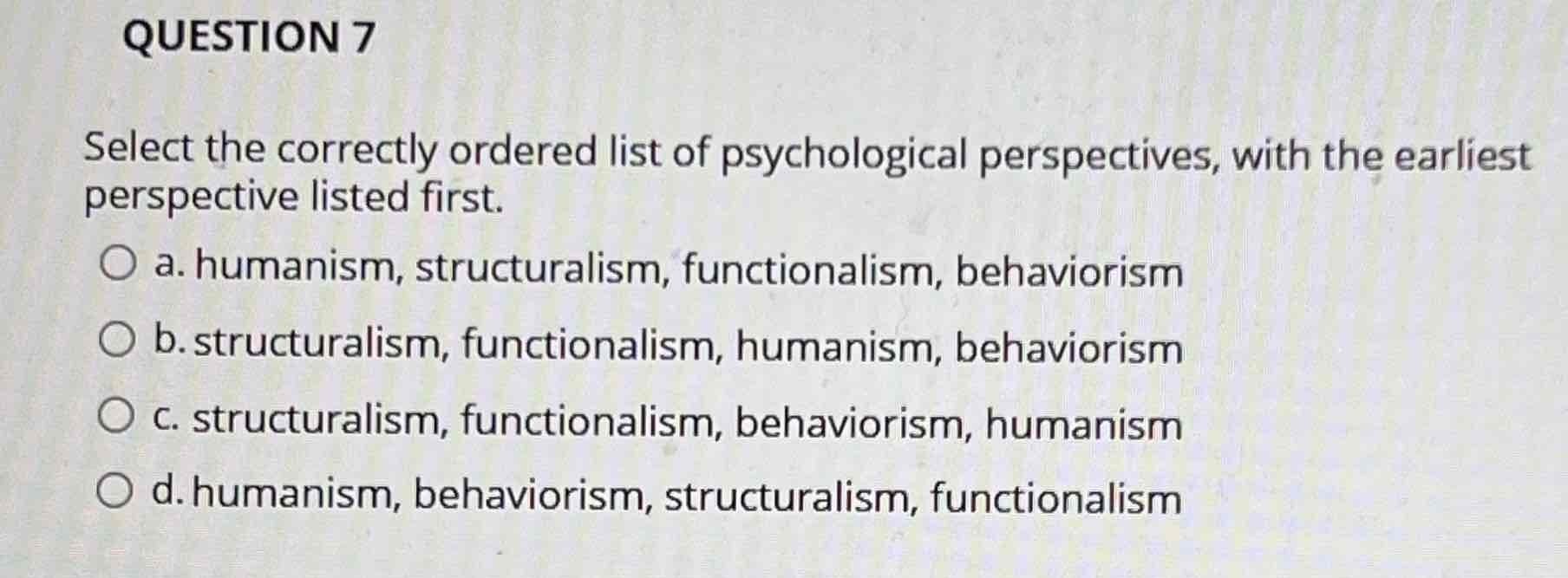
Look at image
SFBH- structuralism, functionalism, behaviorism, humanism
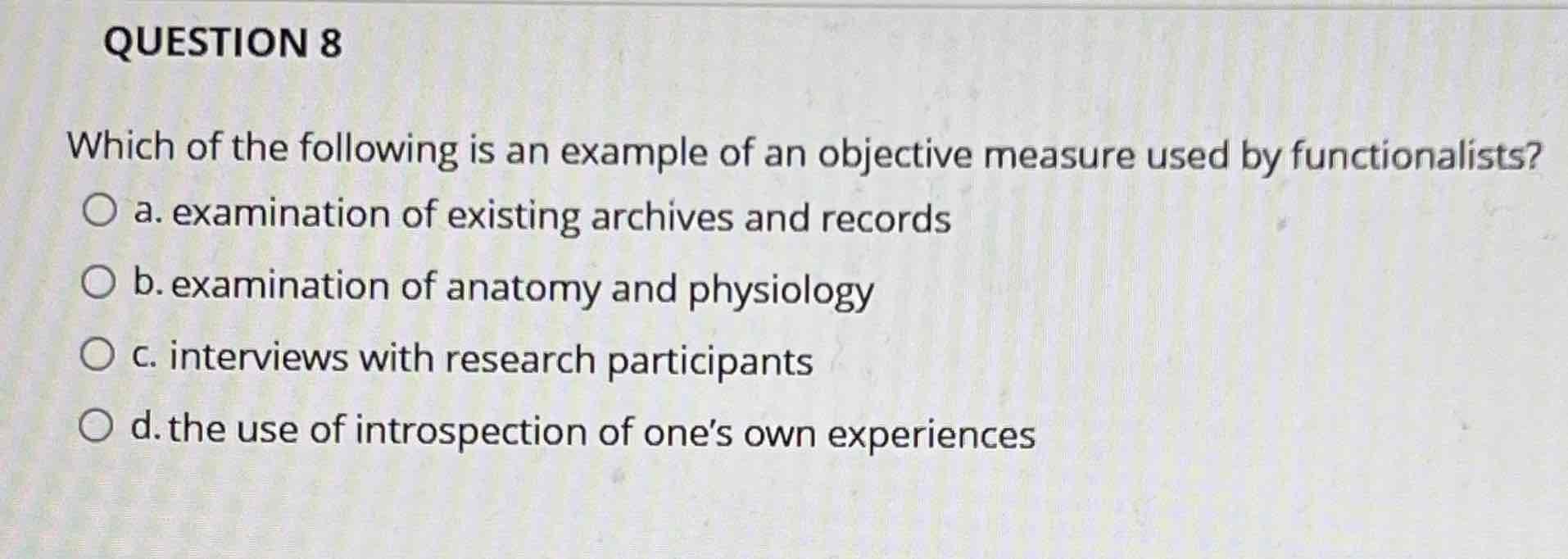
Look at image
examination of anatomy and physiology
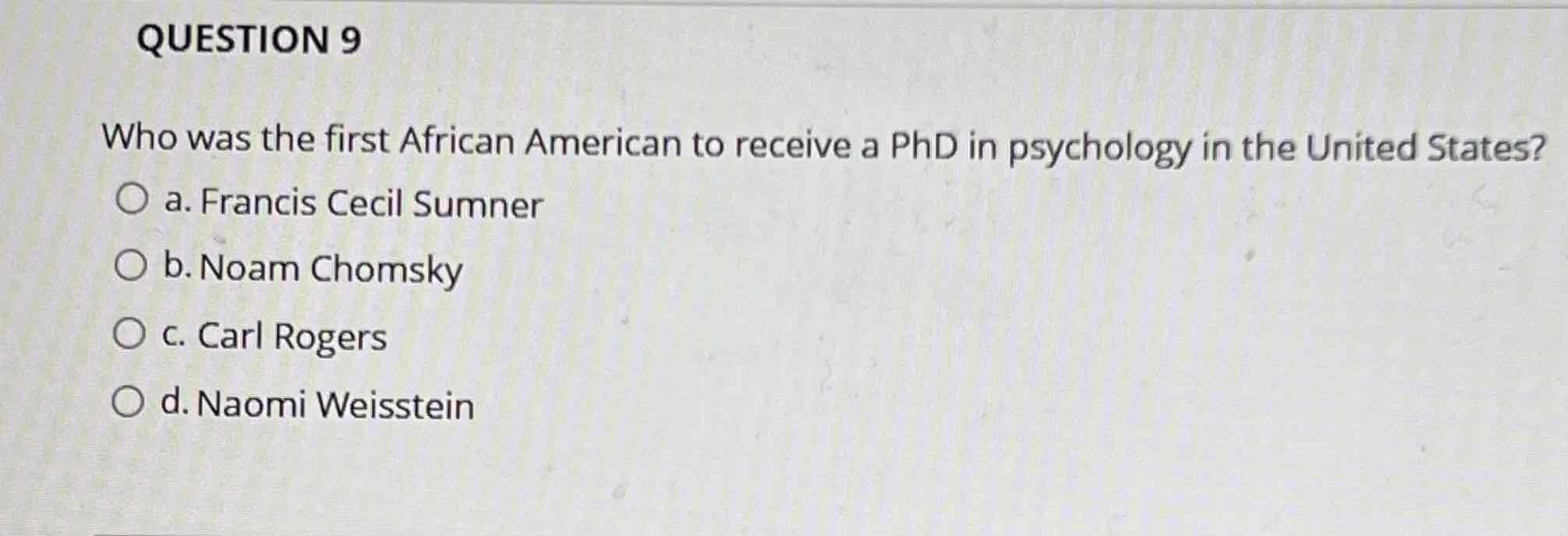
Look at image
Francis Cecil Sumner

Look at image
observation of phenomena

Look at image
Thoughts and their relationship to our experiences and our actions
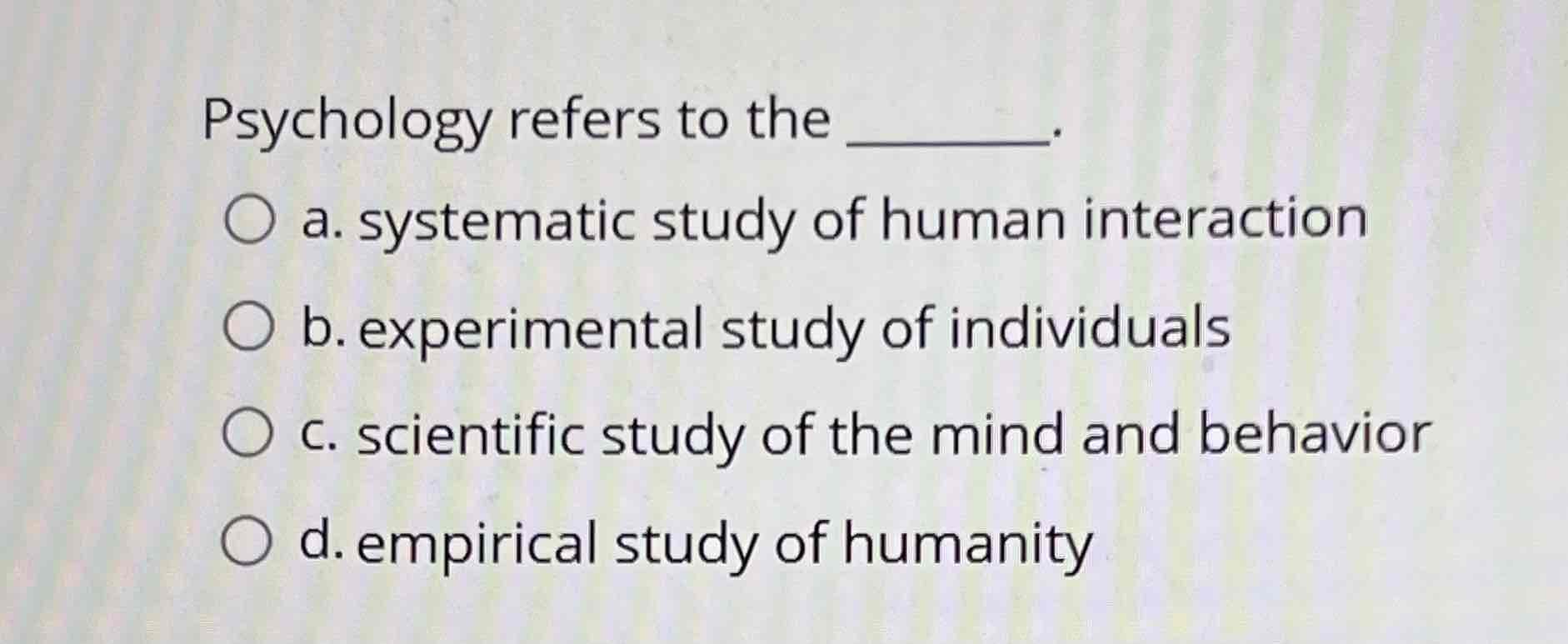
Look at image
scientific study of the mind and behavior

Look at image
developmental

Look at image
introspection
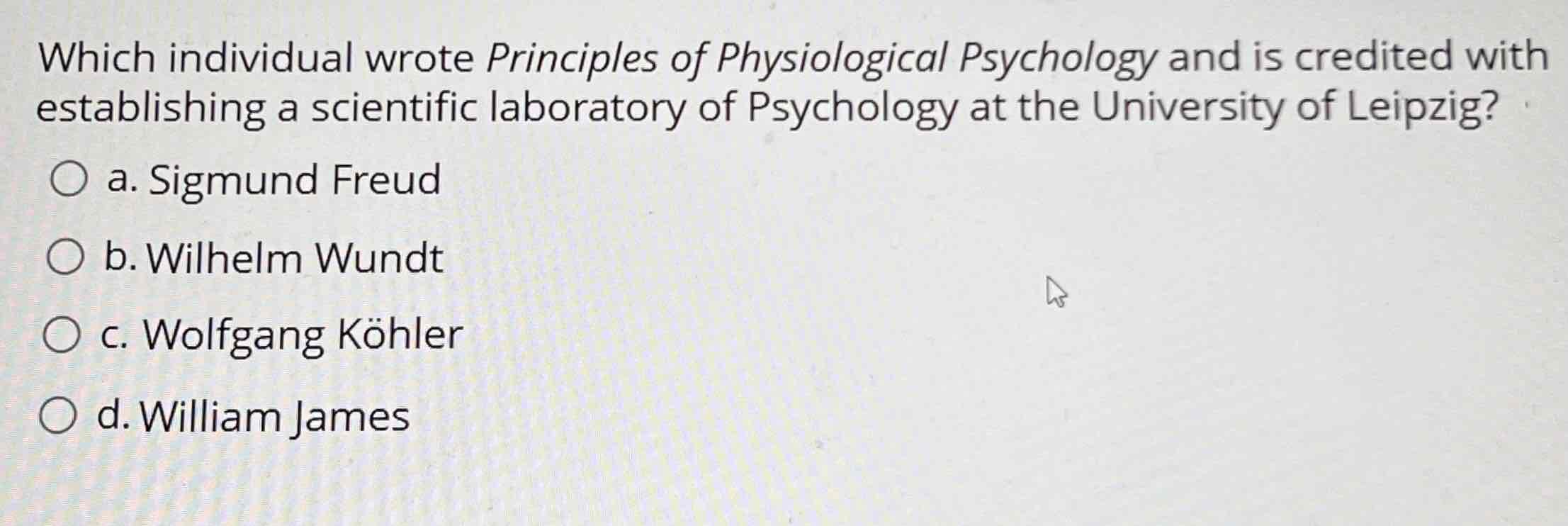
Look at image
Wilhelm Wundt

Look at image
forensic

Look at image
biopsychologist

Look at image
Humanism
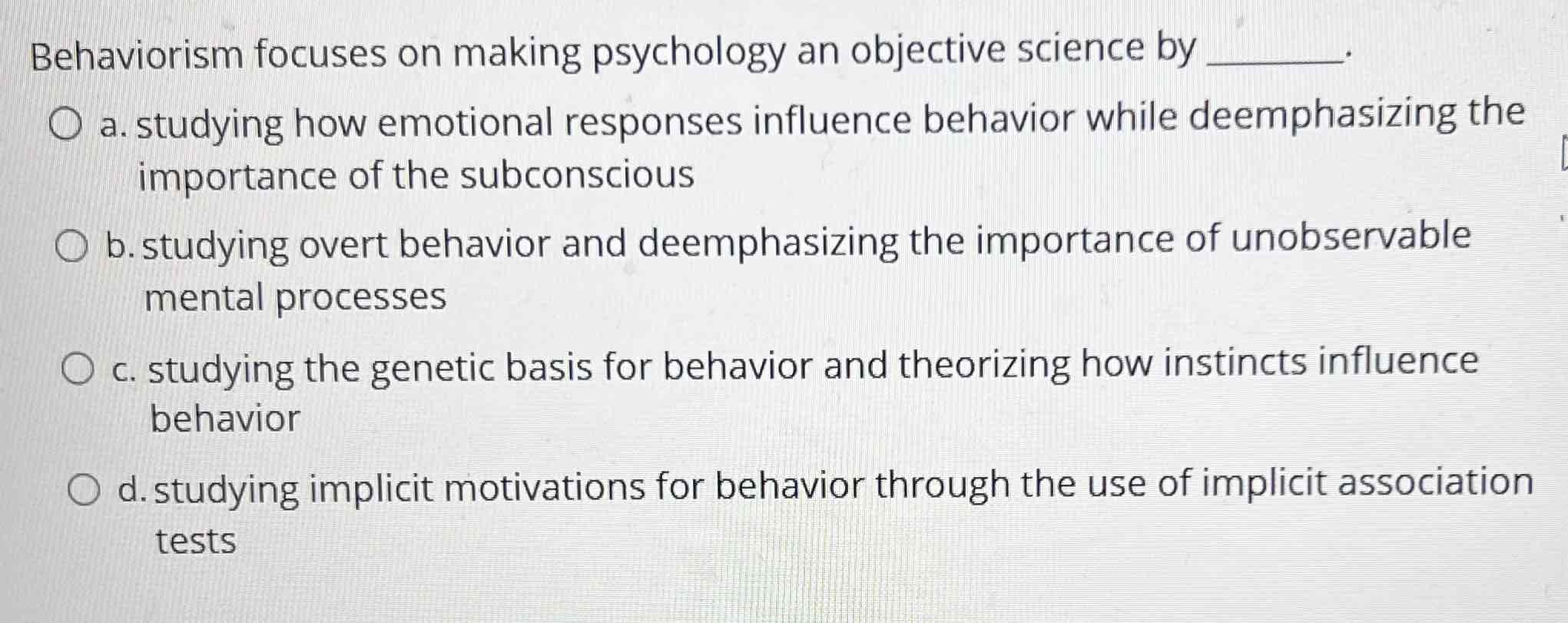
Look at image
studying overt behavior and deemphasizing the importance of unobservable mental processes

Look at image
whether people working at a desk are more likely to be obese

Look at image
Skinner box |

Look at image
The rise of behaviorism overshadowed Gestalt psychology
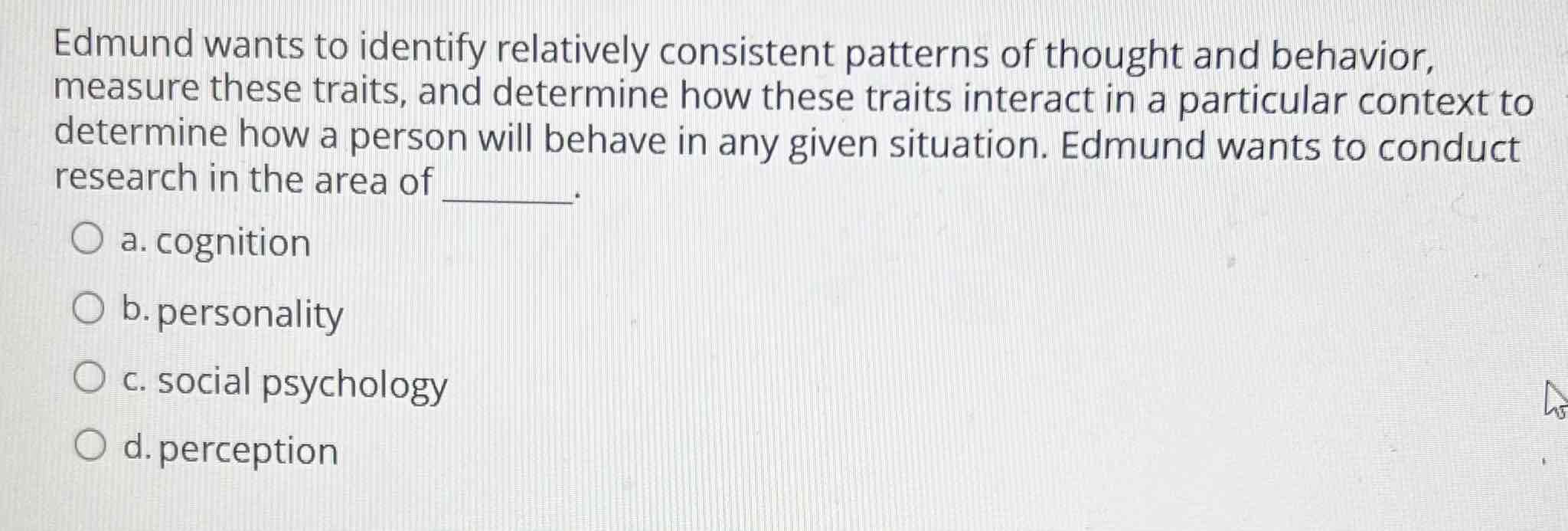
Look at image
personality

Look at image
Studying the function of behavior in the world

Look at image
Scientific method

Look at image
Experimental

Look at image
Case studies

Look at image
Random sampling; random group assignment

Look at image
Social or cultural factors may influence the results, not age
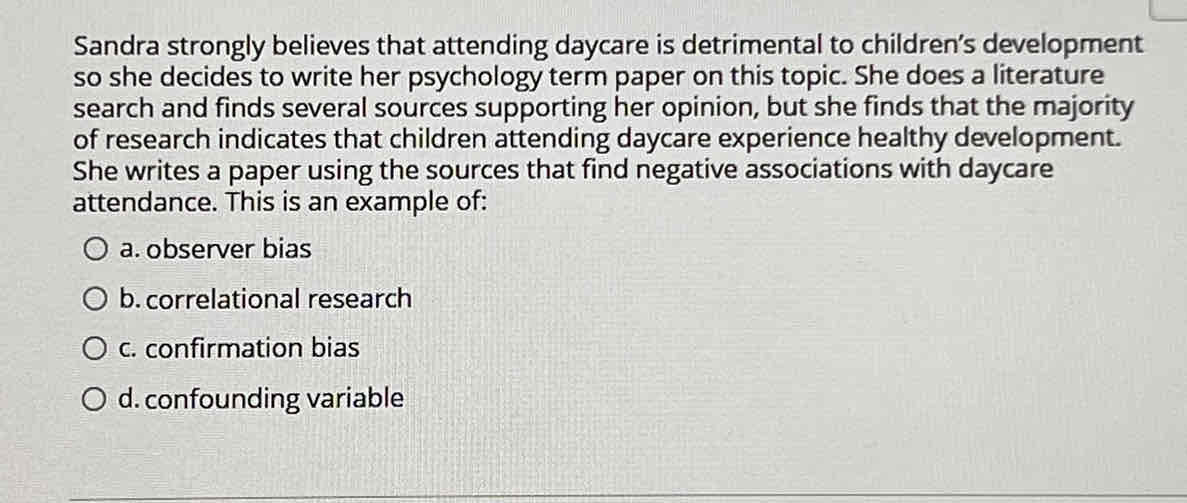
View the image
Confirmation bias
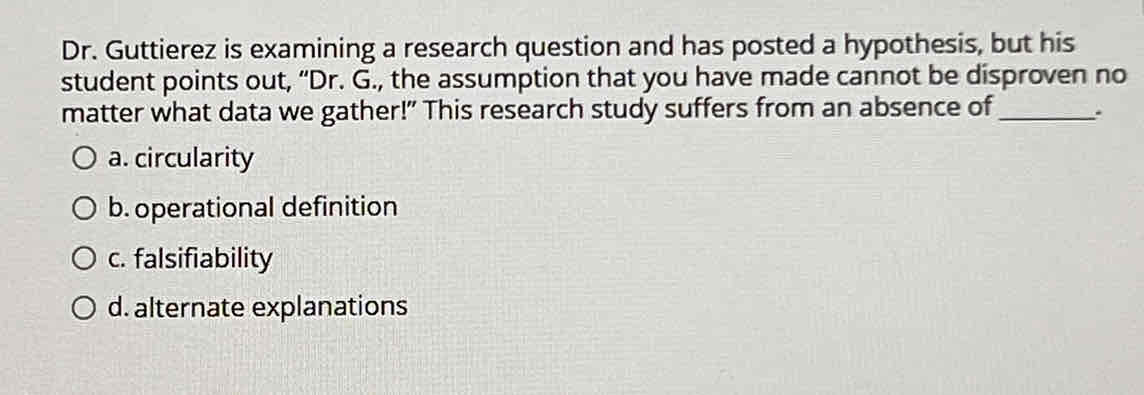
View the image
falsifiability

View the image
Rodents

View the image
one variable decreases as the other increases

View the image
Margaret Floy Washburn

View the image
Replication crisis

View the image
Circular
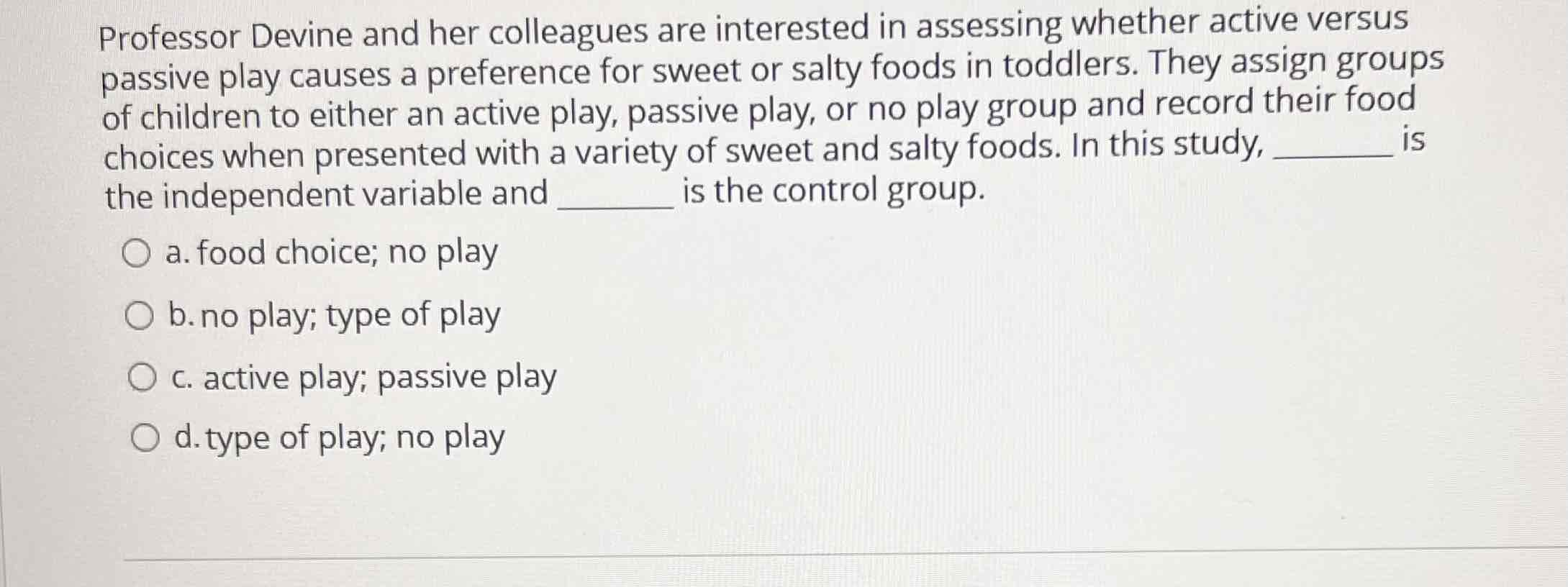
View the image
Type of play; no play??
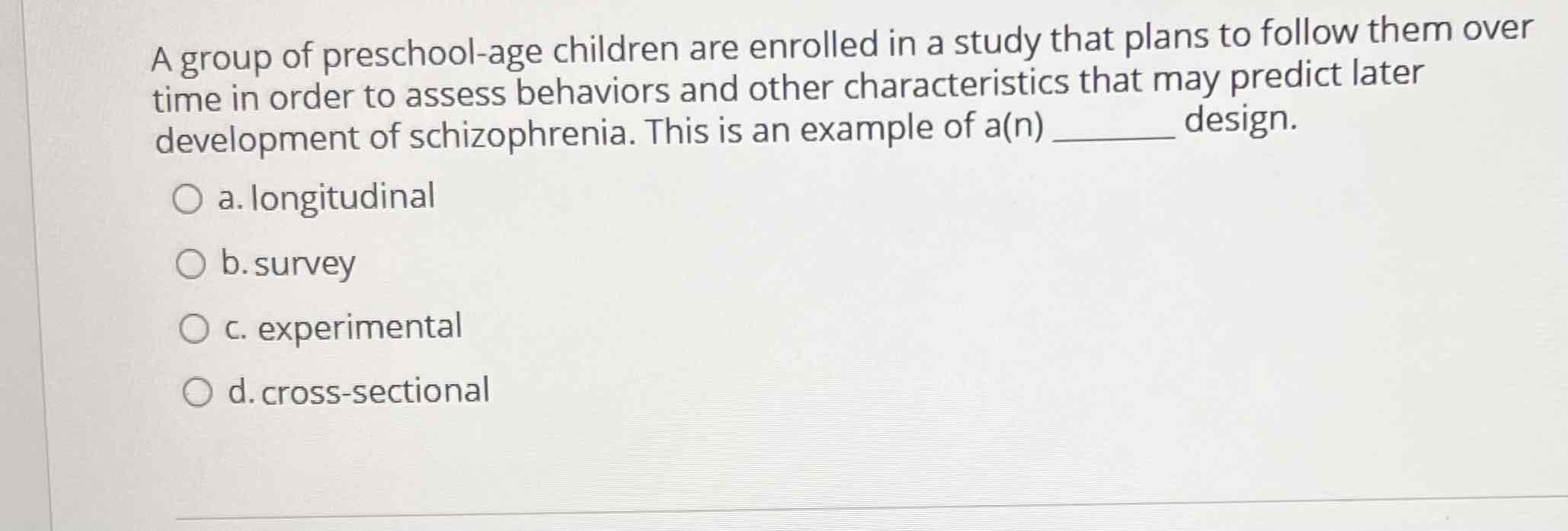
View the image
Longitudinal

View the image
Experimental

View the image
can sometimes be tested with animal studies

View the image
Confounding

View the image
They could research peer-reviewed articles to see if either perspective is supported

View the image
Reliability

View the image
Accuracy

View the image
illusory correlation

View the image
Theory

View the image
-0.53

View the image
Double-blind

View the image
archival research; surveys

View the image
there is a relationship between smoking and lung cancer
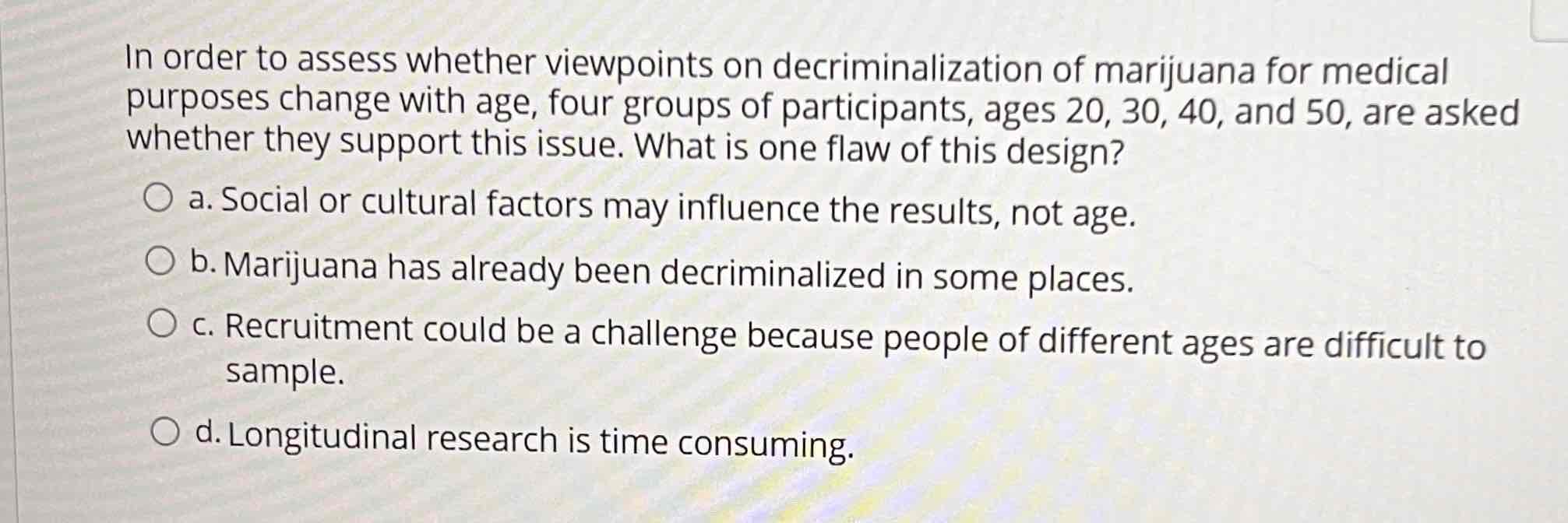
View the image
Social or cultural factors may influence the results, not age

Look at image
Homeostasis

Look at image
Action potential

Look at image
Groan and move her eyes

Look at image
Smell

Look at image
digestion functions become more active

Look at image
Only the right visual field

Look at image
temperature, touch, and pain (sensory)

Look at images
Injury to the brain causes changes in behavior, and specific brain areas are linked to particular behaviors

Look at image
Increase

Look at image
Limbic system

Look at image
substantia nigra; dopamine

Look at image
motor skill deficits in the left side of her body
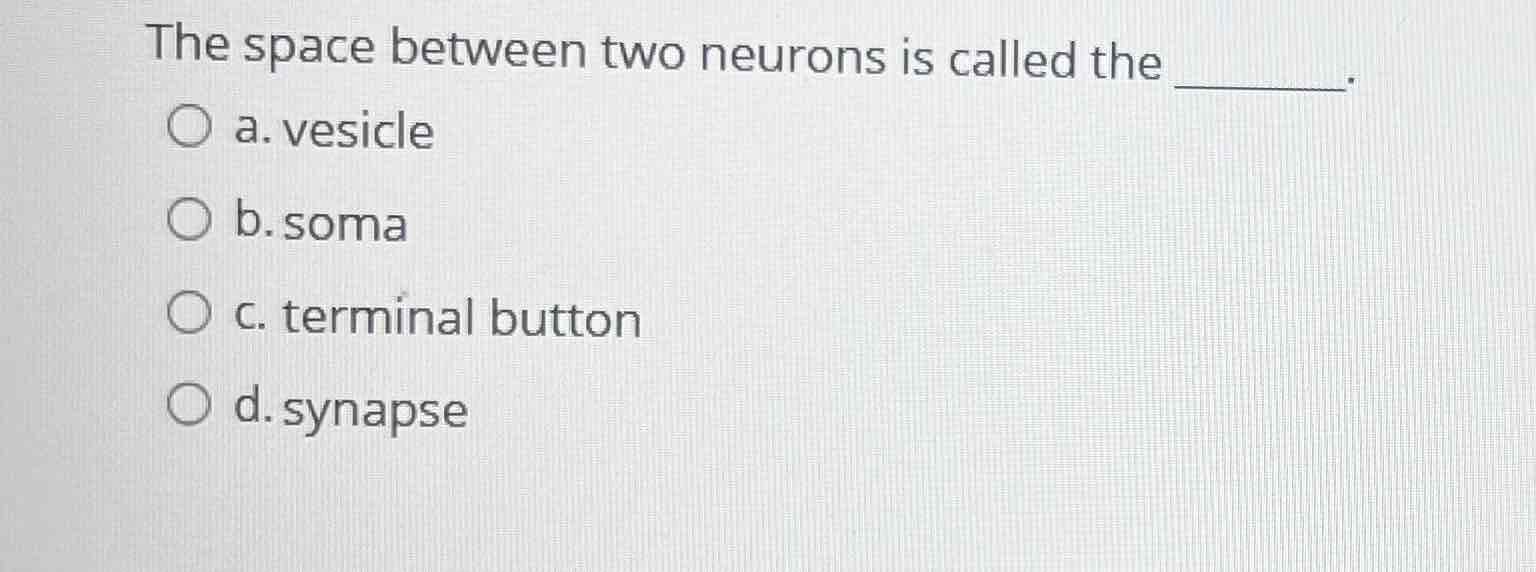
Look at image
synapse

Look at image
beta-endorphin

Look at image
membrane potential becomes more negative than the resting potential
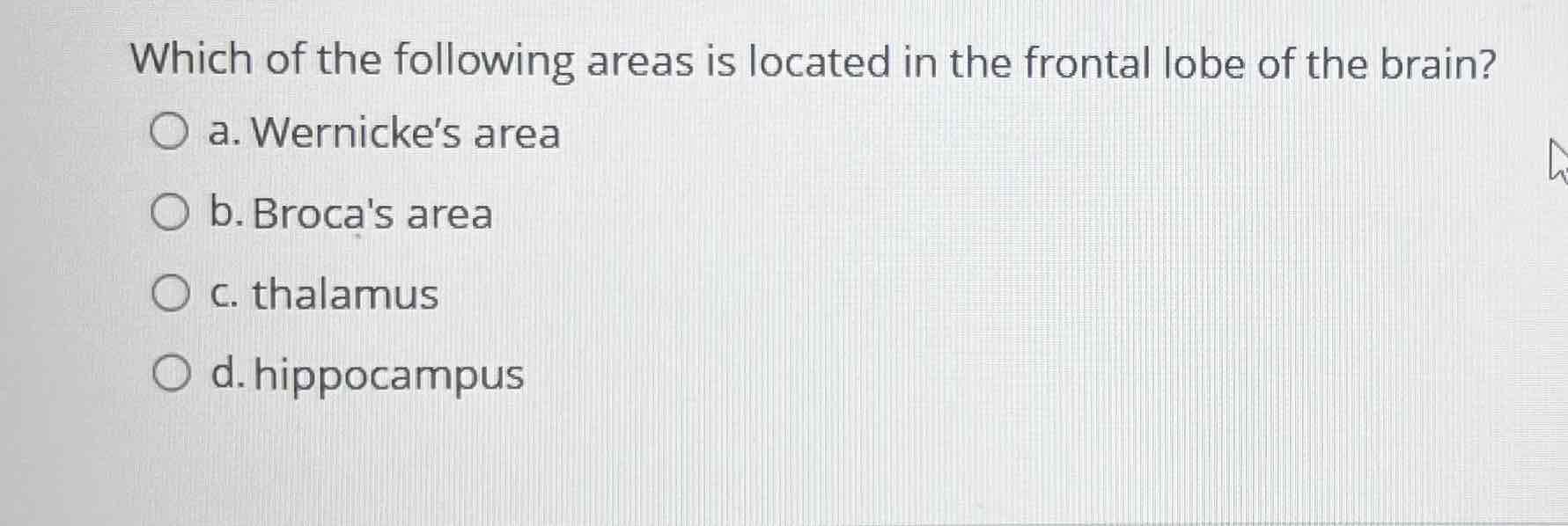
Look at image
Broca's area

Look at image
hypothalamus
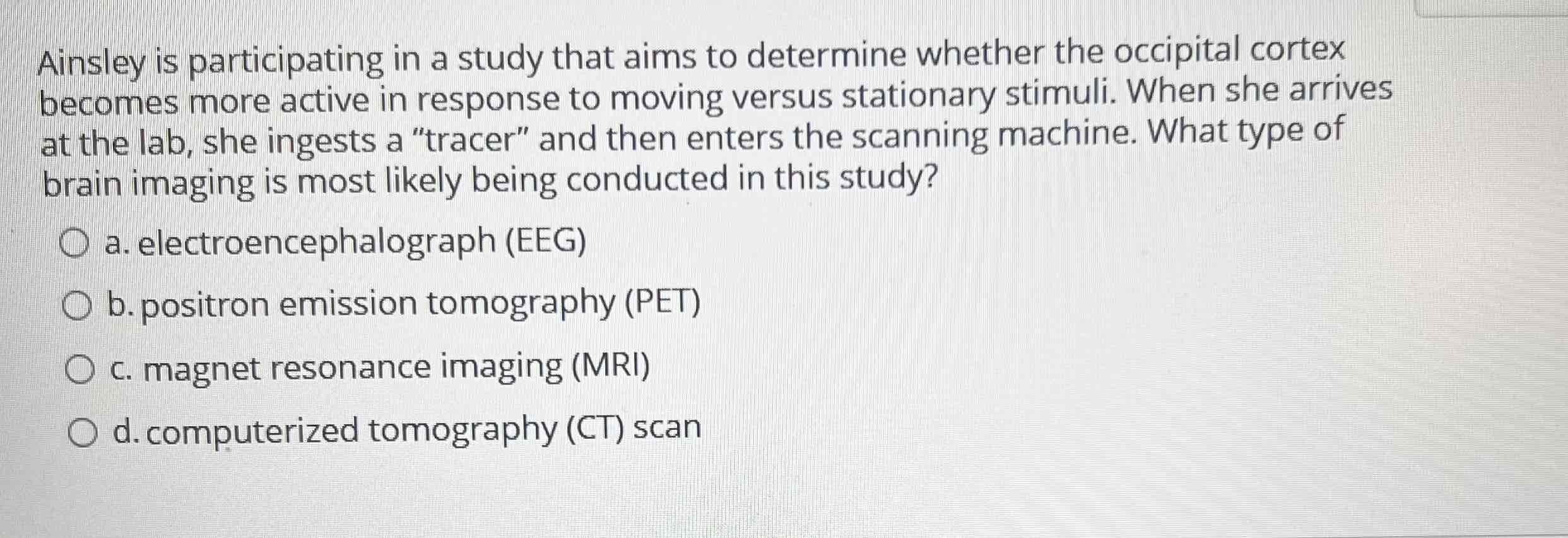
Look at image
positron emission tomography (PET)

Look at image
parasympathetic

Look at image
terminal buttons; synaptic vesicles

Look at image
Membrane potential

Look at image
central; peripheral nervous systems
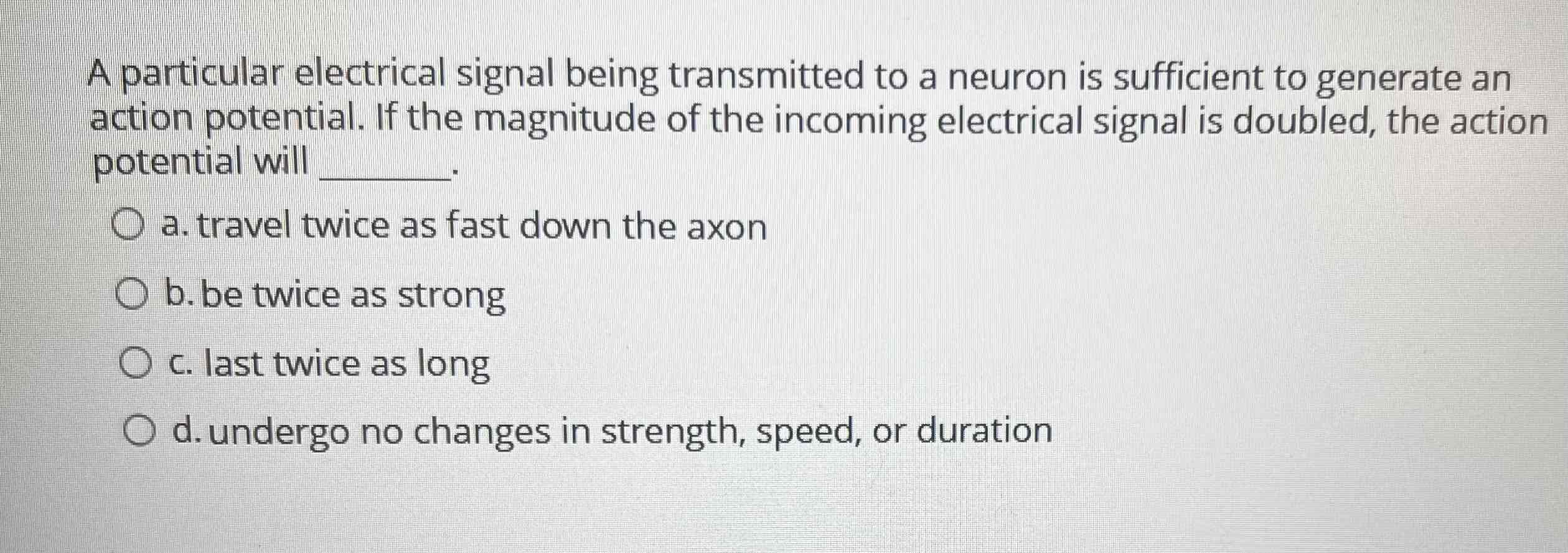
Look at image
undergo no changes in strength, speed, or duration

Look at image
No sensation in his legs and feet
What does Fun Moms Smoke Pot On Tuesday stand for? ( brain question )
F(un)- Frontal Lobe
M(om)- Motor cortex
S(moke)- Sensory cortex
P(ot)-Parietal Lobe
O(n) - Occipital Lobe
T(uesdays)- Temporal lobe
Where is the frontal lobe?
Front of the brain
Where is the motor cortex?
Back of the frontal lobe
Where is the sensory cortex?
Between the motor cortex and parietal lobe
Where is the parietal lobe?
Top of the brain between frontal lobe and occipital lobe
Where is the Occipital lobe?
Back of the brain above the cerebellum
Where is the temporal lobe?
Bottom middle of the brain between the frontal lobe and spinal cord
Where is the thalamus?
Deep in the midbrain, between two cerebral hemispheres
Where is the medulla?
The base of your brain. Connects to your spinal cord
What does the medulla do? ( 3 main functions )
Autonomic involuntary functions like sneezing and vomiting.
Passes messages between spinal cord and brain
Regulates cardiovascular and respiratory systems
( I think MED as medical- sneezing, vomiting, breathing, heart, spinal cord, brain )
What does the thalamus do?
Relays sensory and motor signals from various locations to the cerebral cortex. Alertness, sleep, consciousness, learning, and memory.
I think Mus= MUST sleep, learn, be alert, and conscious
What does the sensory cortex do?
Sensory information
What does the frontal lobe do? ( 1 main to think of- look at bottom of definition )
•control over thinking, movement, memory, social skills, behavior, interaction, self control, decision making, attention span, planning, judgement, inhibition, collecting and organizing info, decision making, motivation, problem solving, planning
MAIN TO REMEMBER: Abstract Thought
What does the motor cortex do? ( 3 main )
Planning, control, execution of voluntary movements
Think of a car motor causing it to function or MOVE
What does the Parietal Lobe do?
Sensory information and spatial awareness
remember by saying: Sensitive Parents or PS
What does your occipital lobe do?
Visual part of the brain- processes what we see. Such as colors, shapes, faces, and movements OR just remember: VISUAL/ O-O O=Eyes
What does the limbic system do?
Emotions, memory, learning
What does the amygdala do?
Basic emotions
What does the hippocampus do?
Learning and memory
What does the brain stem do?
Regulates important info such as breathing, heart rate, sleep, eating, and more
What does the temporal lobe do?
Emotional. Information from senses, memories, understand languages, HEARING, process emotions, some visual perception
Main: Sound and speech. I think of losing your Temper makes you scream (Sound and speech)
Which area would be primarily responsible for ducking when a friend throws a water balloon at you?
Temporal lobes
Parietal lobes
Frontal lobes
Occipital lobes
Occipital
Which area would be primarily responsible for buying refreshments and decorating your house for an upcoming party?
Temporal lobes
Parietal lobes
Frontal lobes
Occipital lobes
Frontal lobe
If an individual has trouble speaking after a car accident, they may have
Broca's Aphasia
Wernicke's Aphasia
Broca’s Aphasia
Voluntary behavior occurs in response to environmental stimuli through the:
Primary auditory cortex
Broca's area
Wernicke's area
Primary motor cortex
Primary motor cortex